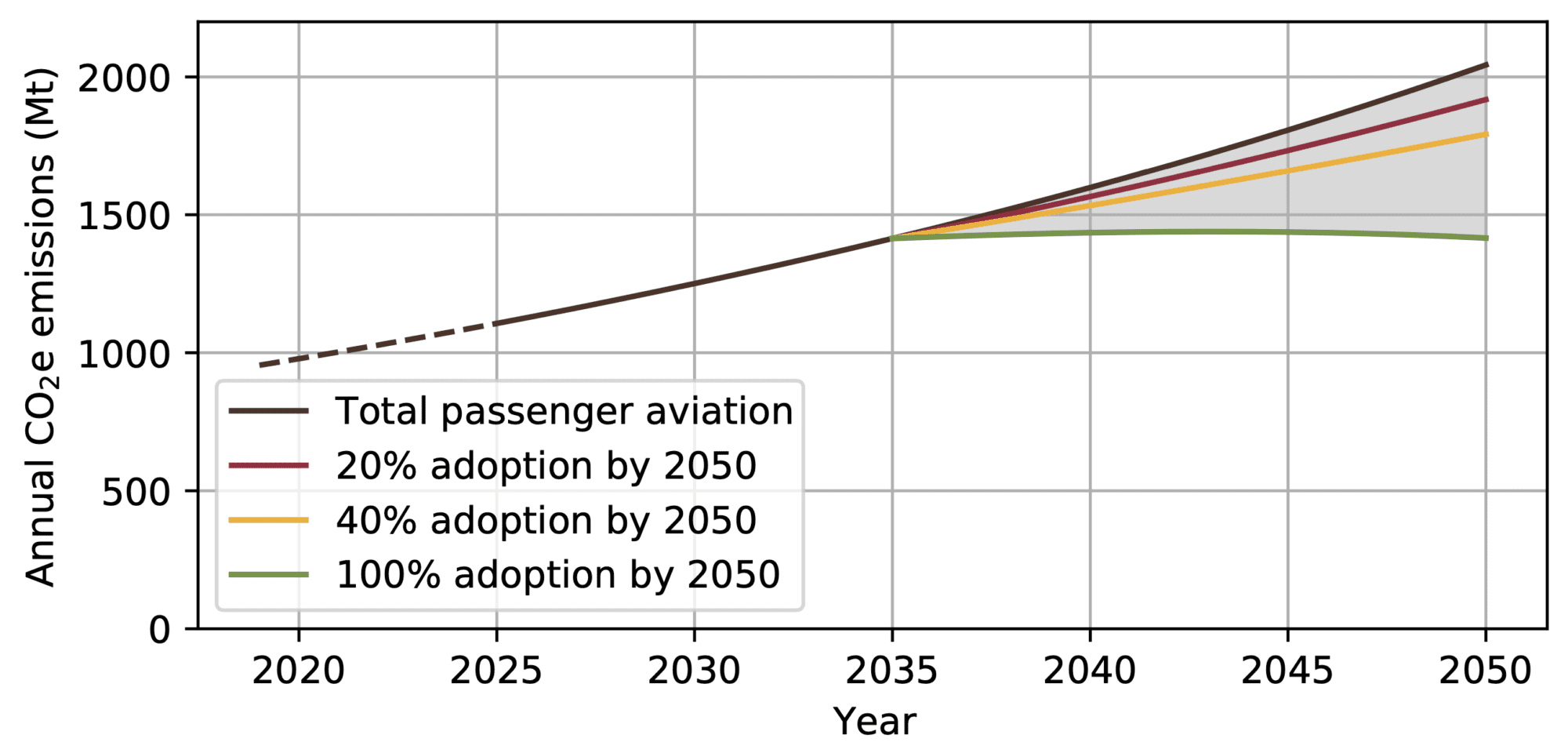CO2 emissions from commercial aviation: 2013, 2018, and 2019
White paper
Performance analysis of evolutionary hydrogen-powered aircraft
This study explores the potential performance characteristics, fuel-related costs and emissions, and replaceable fossil fuel market of LH2-powered aircraft entering service in 2035. In keeping with aviation’s conservative approach to new aircraft design, only evolutionary advances in design parameters that are feasible by 2035 are considered. Two LH2 combustion designs are assessed: a smaller turboprop aircraft targeting the regional market, and a narrow-body turbofan aircraft suitable for short and medium-haul flights. These designs are benchmarked against the ATR 72 and the Airbus A320neo, respectively. Both designs will require an elongated fuselage to accommodate LH2 storage behind the passenger cabin. Gravimetric indices (GI), which denote the ratio of the fuel mass to the mass of the full fuel system including the cryogenic tank, of between 0.2 and 0.35 are investigated. Seating pitch (SP) values of 29 and 30 inches, mimicking the seating density of low-cost and regular airliners, are used. The potential market coverage of LH2-powered aircraft families, which include variants of the baseline design with different range and passenger capacities, are analyzed as well.
While LH2-combustion aircraft do not perform as well as their jet fuel counterparts, they can still play an important role in meeting aviation’s 2050 climate goals. Compared to fossil-fuel aircraft, LH2-powered aircraft will be heavier, with an increased maximum takeoff mass (MTOM), and less efficient, with a higher energy requirement per revenue-passenger-kilometer (MJ/RPK). They will also have a shorter range than fossil-fuel aircraft. Nevertheless, we estimate that evolutionary LH2-powered narrow-body aircraft could transport 165 passengers up to 3,400 km and LH2-powered turboprop aircraft could transport 70 passengers up to 1,400 km. Together, they could service about one-third (31 to 38%) of all passenger aviation traffic, as measured by revenue passenger kilometers (RPKs).
Fueling LH2 designs with green hydrogen is expected to cost more than fossil jet fuel but less than using blue hydrogen and e-kerosene. While the market for LH2 aircraft could be broad, powering it with green LH2 will increase fuel costs compared to conventional Jet A aircraft. Carbon pricing would be needed to make green LH2 cost-competitive, with breakeven compared to Jet A expected at between $102 and $277/tonne CO2e in 2050, depending on geography. However, given the industry-wide push toward non-biomass SAFs, synthetic fuels like e-kerosene would likely be a better cost comparison for hydrogen than Jet A, especially from 2035 onwards. Our results suggest that green LH2 will be cheaper than e-kerosene on routes up to 3,400kilometers.
Under the most optimistic fuel and fleet turnover assumptions, evolutionary LH2-powered aircraft could cap, but not absolutely reduce, aviation CO2 compared to 2035 levels. This would require all replaceable missions in 2050 to be serviced by LH2-powered aircraft using green hydrogen and would result in mitigation of 628 Mt-CO2e in 2050, representing 31% of passenger aviation’s CO2e emissions. Internal modeling suggests that a 20% to 40% adoption rate is realistically achievable and would mitigate 126 to 251 Mt-CO2e in 2050, representing 6% to 12% of passenger aviation’s CO2e emissions. (See Figure.) Other technologies, including more fuel-efficient aircraft and sustainable aviation fuels, along with measures to moderate traffic growth will be needed to meet airlines’ aggressive climate goals of net-zero emissions by 2050.

Attachments
Press release
